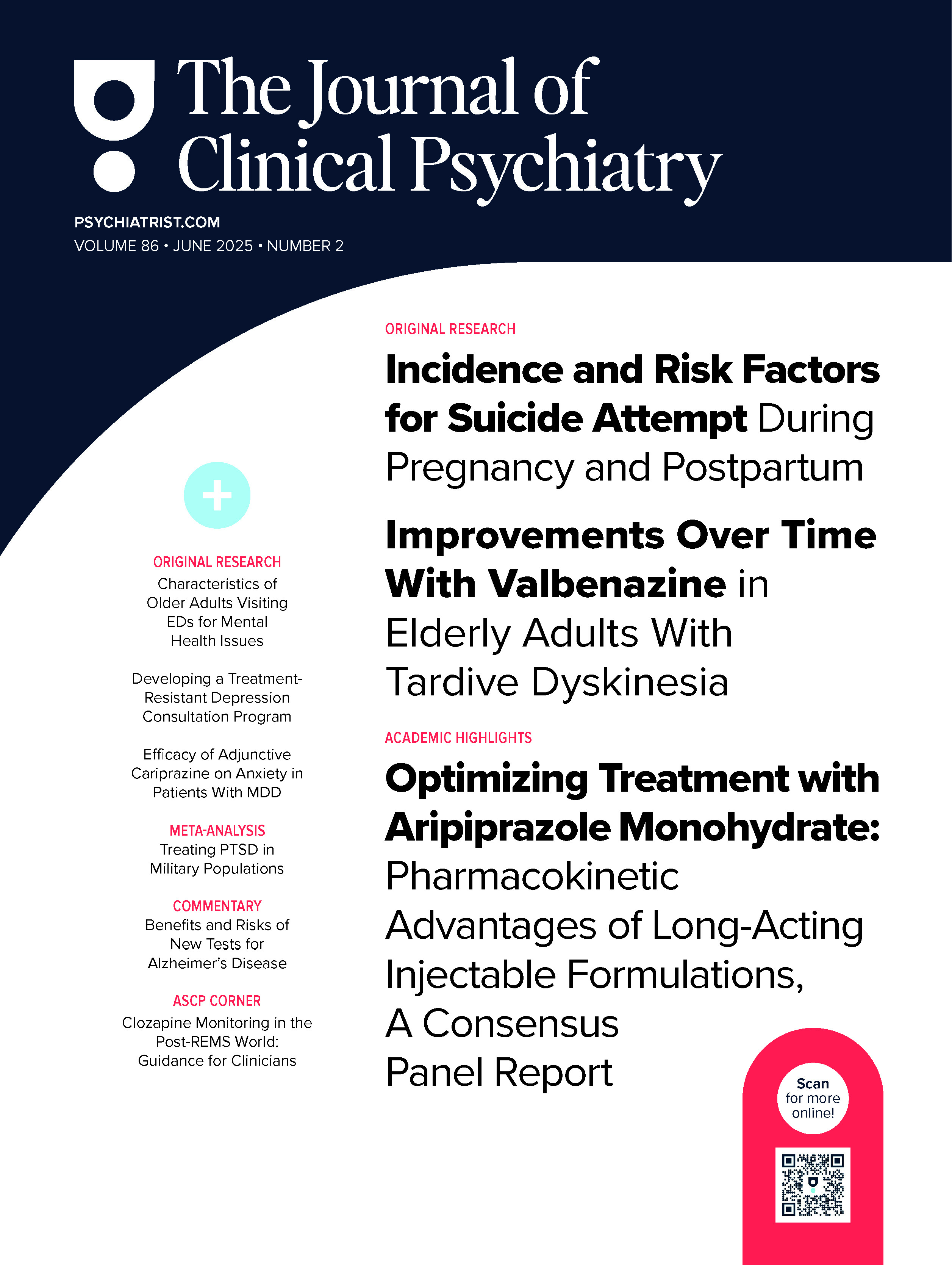Background: Suicidal ideation is a frequent and difficult-to-treat clinical challenge among patients with major depressive disorder (MDD). However, little is known regarding the differential development during antidepressant treatment and whether some patients may suffer from persistent suicidal ideation.
Methods: Among 811 patients with Schedules for Clinical Assessment in Neuropsychiatry (SCAN)-verified MDD from 2004-2007 assessed weekly for 12 weeks of escitalopram or nortriptyline antidepressant treatment, we applied item response theory to integrate a suicidality score based on 3 rating scales. We performed latent growth mixture modeling analysis to empirically identify trajectories. Multinomial logistic regression analyses estimated associations with potential predictors.
Results: We identified 5 distinct classes of suicidal ideation. The Persistent-low class (53.7%) showed no suicidal ideation whereas the Persistent-high class (9.8%) had high suicidal ideation throughout 12 weeks. Two classes showed a fluctuating course: the Fluctuating class (5.2%) ended at a low level of suicidal ideation, whereas the Slow-response-relapse class (4.8%) initially responded slowly but then experienced a large increase to a high level of suicidal ideation after 12 weeks. The Fast-response class (26.5%) had a high baseline severity similar to the Persistent-high class but responded quickly within a few weeks and remained at a low level. Previous suicide attempts and higher mood symptom severity were associated with worse suicidal ideation trajectories, whereas living with a partner showed a trend toward better response.
Conclusion: Approximately 1 of 5 patients with MDD showed high or fluctuating suicidal ideation despite antidepressant treatment. Studies should investigate whether suicidal ideation may persist for longer periods and more targeted treatment possibilities.
Trial Registration: ISRCTN’ ‹’ ‹ identifier: ISRCTN03693000‘ ‹’ ‹’ ‹’ ‹
Free Access: Please Log In
This content is completely free—but you need to be logged in to read the full article. If you already have an account, please log in below. Otherwise, register for free to unlock instant access.
Please sign in or purchase this PDF for $40.00.
Already a member? Login




